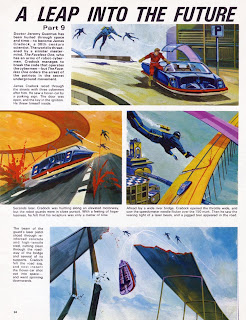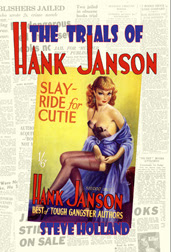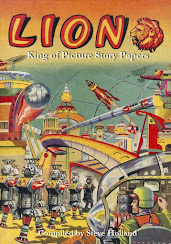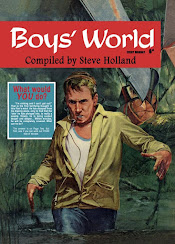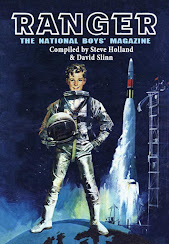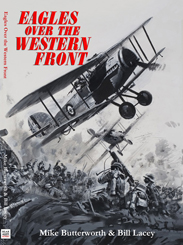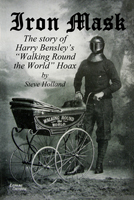Saturday, December 31, 2011
Friday, December 30, 2011
Comic Cuts - 30 December 2011
This is going to be brief as I've spent most of the week relaxing in front of the television, and almost as much of the week thinking how lousy TV is nowadays. There's usually just enough to keep me and Mel entertained of an evening, with the occasional dip into a box set or a film on DVD, so it usually works out quite nicely; Christmas, on the other hand, means family and, most years, my sister's addiction to soaps. Not a problem this year as she couldn't get away from work until Tuesday. Lovely to see her, but I was secretly pleased not to have to watch Emmerdale or Coronation Street, only to end up watching Strictly Come Dancing.
The things we do for our families!
Escaping into my office for the occasional cigarette, I've managed to tweak the last few pages of 'The Crusader', so I'm now in a position to start laying out the Pages from History book. Mind you, I've also got to think about getting some paying work done and there's New Year still to cope with. Chance are that next week's column will be as slim on news as this one. Hopefully not. We'll just have to wait and see, but I'm determined to get to the proofing stage in January and will start taking pre-orders at that point, once I'm confident that the whole thing looks good.
Today's random scans are a clutch of horror covers from Digit Books,
A Leap Into the Future comes to an end tomorrow. I'm not sure what we'll have next week, but I do know that we should have another Paul Temple yarn starting shortly. Maybe Monday, maybe not. Depends on what I can get done before Midnight chimes in the new year.
All the best for 2012 to you all.
The things we do for our families!
Escaping into my office for the occasional cigarette, I've managed to tweak the last few pages of 'The Crusader', so I'm now in a position to start laying out the Pages from History book. Mind you, I've also got to think about getting some paying work done and there's New Year still to cope with. Chance are that next week's column will be as slim on news as this one. Hopefully not. We'll just have to wait and see, but I'm determined to get to the proofing stage in January and will start taking pre-orders at that point, once I'm confident that the whole thing looks good.
Today's random scans are a clutch of horror covers from Digit Books,
A Leap Into the Future comes to an end tomorrow. I'm not sure what we'll have next week, but I do know that we should have another Paul Temple yarn starting shortly. Maybe Monday, maybe not. Depends on what I can get done before Midnight chimes in the new year.
All the best for 2012 to you all.
Alan Moore interviewed by New Humanist
Alan Moore recently spoke at the Nine Lessons and Carols for Godless People at the Bloomsbury Theatre on 18-23 December 2011. The interview below was recorded backstage by Adam Smith.
(* © The Rationalist Association.)
(* © The Rationalist Association.)
Thursday, December 29, 2011
Wednesday, December 28, 2011
Tuesday, December 27, 2011
Monday, December 26, 2011
Sunday, December 25, 2011
Saturday, December 24, 2011
Friday, December 23, 2011
Comic Cuts - 23 December 2011
Merry Christmas!
The tree is up and decorated, there's tinsel around all the light fittings and dangly things that brush the top of your head every time you walk through the living room. It's Christmas time in the Alley!
I've had a busy week on the run-up to Christmas, having decided to try and get Bear Alley Books back on track while everyone else is worrying about wrapping gifts and getting cards in the post. I had all my presents and cards sorted out a couple of weeks ago — which is shockingly organized for me as I usually leave everything to the last minute. See last week's column for a typical example. Mind you, at the tail end of last week the Guardian phoned at 9 o'clock Thursday night and asked for a piece on Joe Simon which was needed before noon the next day, so I wouldn't want anyone to think that I'm a complete slowcoach. The piece was posted on the Guardian website around 3 o'clock on Friday afternoon.
Since then I've been working on the last few original art boards that make up Pages from History, the C. L. Doughty collection. Not as easy a task as you might at first imagine; although they're lovely to look at, a scanner is an unforgiving way to treat a page. These boards are forty years old so you would expect a little wear and tear. The most time-consuming part is the lettering, which has been stuck onto the artwork with cow gum. It's slightly raised and has spent forty years rubbing against other boards so it is discoloured and, occasionally, needs a lot of restoration. Then there are the missing pages, the ones where the art boards disappeared long ago — I spent Monday morning scanning the printed versions and trying to make them look as good as the original artwork pages. Thankfully there was only four pages... although I managed to screw up the scanning and ended up doing the job twice.
As I write, artwork for 82 pages of the book has been cleaned up and there are 11 pages of original art still to go. The introduction is written in rough and those pages have been laid out, albeit in rough. There will also be a gallery of historical illustrations, but I've no idea how many pages that will run to until I start laying the pages out. Some are vignettes whilst others were designed to stretch across two pages of a magazine and I don't want to shrink them down too far. After all, one of the reasons for doing the book is to make the most of this unique opportunity to work from original artwork.
I managed to track down some sales figures for this year's annuals a couple of weeks ago and I can now provide an update. The latest total sales figures for Beano Annual 2012 is 108,325, for Moshi Monsters Official Annual 2012 99,955 and for Peppa Pig: Peppa and George's Annual 2012 74,145.
There was an interesting comment in a recent article in the Daily Mail (13 December) by Craig Brown which notes:
Today's random scans are a trio of Johnny Dekker crime yarns and a Scion gangster with comic connections, the first three being written by Mick Anglo and the latter painted by Philip Mendoza under the pen-name Ferrari. Not as Christmassy as I'd originally planned but I really haven't had much time between work and shopping.
Next week: A Leap Into the Future continues. Hope you all have a good time over the festive season. Eat, drink and be merry. That's what I'm planning to do!
The tree is up and decorated, there's tinsel around all the light fittings and dangly things that brush the top of your head every time you walk through the living room. It's Christmas time in the Alley!
I've had a busy week on the run-up to Christmas, having decided to try and get Bear Alley Books back on track while everyone else is worrying about wrapping gifts and getting cards in the post. I had all my presents and cards sorted out a couple of weeks ago — which is shockingly organized for me as I usually leave everything to the last minute. See last week's column for a typical example. Mind you, at the tail end of last week the Guardian phoned at 9 o'clock Thursday night and asked for a piece on Joe Simon which was needed before noon the next day, so I wouldn't want anyone to think that I'm a complete slowcoach. The piece was posted on the Guardian website around 3 o'clock on Friday afternoon.
Since then I've been working on the last few original art boards that make up Pages from History, the C. L. Doughty collection. Not as easy a task as you might at first imagine; although they're lovely to look at, a scanner is an unforgiving way to treat a page. These boards are forty years old so you would expect a little wear and tear. The most time-consuming part is the lettering, which has been stuck onto the artwork with cow gum. It's slightly raised and has spent forty years rubbing against other boards so it is discoloured and, occasionally, needs a lot of restoration. Then there are the missing pages, the ones where the art boards disappeared long ago — I spent Monday morning scanning the printed versions and trying to make them look as good as the original artwork pages. Thankfully there was only four pages... although I managed to screw up the scanning and ended up doing the job twice.
As I write, artwork for 82 pages of the book has been cleaned up and there are 11 pages of original art still to go. The introduction is written in rough and those pages have been laid out, albeit in rough. There will also be a gallery of historical illustrations, but I've no idea how many pages that will run to until I start laying the pages out. Some are vignettes whilst others were designed to stretch across two pages of a magazine and I don't want to shrink them down too far. After all, one of the reasons for doing the book is to make the most of this unique opportunity to work from original artwork.
I managed to track down some sales figures for this year's annuals a couple of weeks ago and I can now provide an update. The latest total sales figures for Beano Annual 2012 is 108,325, for Moshi Monsters Official Annual 2012 99,955 and for Peppa Pig: Peppa and George's Annual 2012 74,145.
There was an interesting comment in a recent article in the Daily Mail (13 December) by Craig Brown which notes:
Girls have a greater number of annuals to choose from, but with a more limited range. Most feature Cheryl Cole in some shape or form.I can't argue with that, although I would argue that many of the same things have appeared in annuals since the 1960s. The difference is that annuals used to be a lot bigger and the pin-ups and fashion features were part of a broader range of contents. I'd go as far to say that they were the filler between the strips and stories. Unfortunately, the strips and the stories were the most expensive part of the books compared to an agency photo of a pop star or a hints and tips column written by a sub-editor. I can't even begin to guess how much it cost to put together those early Eagle Annuals or how that compares to the budget of a modern annual but I imagine the difference is huge. Yes, the sales are less these days but isn't it becoming a self-fulfilling prophecy? You save money by putting less in because the circulation is falling, but the circulation falls all the more because the final product doesn't really satisfy the readership, so the sales fall and the publisher cuts costs, etc., etc. A vicious circle.
__She is on the cover of the Mizz Official Annual, which includes The Crush Clinic ('Your top 8 lad worries — sorted!'), the Pop Princesses Annual ('all you need to know about becoming a Pop Princess!') and, of course, the Cheryl Annual 2012, which offers Cheryl facts, Cheryl's favourite recipes, Cheryl's top tips to being a princess of pop, a free Cheryl calendar and instructions on how to 'throw your own Cheryl slumber party with Cheryl makeovers and manicures!'
__Nowadays, Cheryl Cole (any relation, I wonder, to Old King Cole?) is obviously a vital part of any child's Christmas. One of the few annuals not to mention her is the It's A Girls' World A To Z Annual 2012, but its AZ of contents is packed full of substitutes, from A for 'accessories, autographs, Adele, animals' and B for 'beauty tips, Beyonce, boys' all the way through to Z for Zac Efron...
__The more cynical adults behind today’s Christmas annuals seem equally determined to imprison children in a shallow fantasy of beauty tips, accessories, ‘hot lads’ and Cheryl Cole. Curiosity, charity, aspiration and adventure are all missing. The world they offer seems infinitely smaller, and infinitely more dismal.
Today's random scans are a trio of Johnny Dekker crime yarns and a Scion gangster with comic connections, the first three being written by Mick Anglo and the latter painted by Philip Mendoza under the pen-name Ferrari. Not as Christmassy as I'd originally planned but I really haven't had much time between work and shopping.
Next week: A Leap Into the Future continues. Hope you all have a good time over the festive season. Eat, drink and be merry. That's what I'm planning to do!
Thursday, December 22, 2011
Wednesday, December 21, 2011
A Leap Into the Future part 1
'A Leap Into the Future' appeared in the early issues of World of Wonder, which we have been discussing in recent weeks. The (irregular) trip through the illustrations of WoW will return in the new year but for the next eleven days we will be publishing an episode each day for folks who fancy a break from the Christmas and New Year festivities.
The artist is Gerry Wood, who later went on to draw 'The Trigan Empire' in Look and Learn.
A quick thank you to David Slinn who responded to my original call for help and who sent over some missing episodes.
(* World of Wonder © Look and Learn Ltd.)
The artist is Gerry Wood, who later went on to draw 'The Trigan Empire' in Look and Learn.
A quick thank you to David Slinn who responded to my original call for help and who sent over some missing episodes.
(* World of Wonder © Look and Learn Ltd.)
Tuesday, December 20, 2011
Monday, December 19, 2011
Sunday, December 18, 2011
Edith S Billings
Edith S. Billings wrote a couple of historical novels and is not the kind of author I would normally stumble across. However, she popped up on the radar of my mate John Herrington, who dropped me a line asking what thoughts I had on her somewhat erratic claims about how old she was.
It begins with a rather straightforward claim on a passport application in which Edith S. Billings claimed she was born in Merthyr Tydfil on 14 April 1878. The application (above), made in 1919, revealed a little about her, including the fact that she was married and had lived in the USA for many years.
A little digging turned up a marriage certificate for Stanley Billings with enough clues to identify him fairly quickly. His story is relatively easy to tell. Born in Hinckley, Leicestershire, in 1867, he was the son of John Billings and his wife Hannah (nee Beardsmore) and was working as a clerk when he emigrated to the United States in around 1884. He had become a naturalized American citizen on 9 October 1890 and by 1900 was describing his occupation as working in 'dry goods'. He lived in Passaic, New Jersey, until 1918 when, it is thought, he died.
Stanley had married his wife on 5 February 1888 in Manhattan. Their marriage reveals that Edith was born Edith Davis, the daughter of John H. Davis and his wife M. J. (nee Thomas).
Births in Glamorganshire in the period around the supposed birth of Edith S. Davis include only three suspects of which one seems highly likely: Edith Susan Davies (sic), b. Merthyr Tydfil, 2Q 1868 (the other two were born in Neath, 1Q 1872, and Bridgend, 1Q 1874). In 1881, Edith, aged 12, was living in Alma Place, St Mary, Tinby, Pembrokeshire with her mother, Mary Jane Davies (sic) (33), and siblings Charles H. (9), Arthur E. (6), Thomas H. (5) and Gladys M(arie?) (4 months). The middle three children were all born in Hyde Park, Pennsylvania, whilst Gladys was born in Tenby.
According to the 1910 census, Edith arrived in the USA in 1882 (1885 per 1900 census) and was 35 years old, having added only 5 years onto her age since the previous census ten years before when she claimed she was 30 and born in May 1870. Her husband had also shed some years, aging only six years (36 to 42). The latter was correct as, curiously, he had given his birth as April 1864 in the 1900 census, making his three years older than he actually was.
The 1910 census also notes that they have a son, Harold, aged 14, born in New York in c.1895. Passenger record for the Lucania, which arrived in Liverpool from New York on 16 November 1895 and returned to New York a month later, arriving on 30 December 1895, shows Stanley (27) and Edith (25) travelling without any child in tow. Nor is Harold to be found living with them at the time of the 1900 census, when Stanley and Edith were boarders with George and Madeline Alvord in Manhattan, N.Y. Harold may be the Harold Billings found in the 1930 census, aged 33, living in White Plains, Westchester, N.Y., with his wife Anna. The census return notes that he was born in New York and both parents were born in England, which matches what is known.
Edith S. Billings began writing and published An Egyptian Love Spell in 1914, which has been described as "Tells in a popular way about the theory of reincarnation." This appeared under the byline Maris Herrington Billings, as did her first novel, Cleomenes, set in Nero's court and climaxing with the burning of ancient Rome. The novel, published in 1917, was dramatized as a 4-act play by Keith Wakeman in 1919. Wakeman then adapted A Priestess of the Sun in 3 acts and an epilogue "from the book of Maris Warrington [Billings]" in 1920.
Following her husband's death, Edith was living at 7522 17th Avenue, Brooklyn, New York, and described herself as an author and editor. She returned to England in 1919 and sold the rights to Cleomenes to Jarrolds, who published it under the byline Maris Warrington in 1920. This was followed by a second historical novel, The Knight of Ravenswood, about Richard the Lionheart, published in 1922.
On 14 February 1922, Granby Billings, a 90-year-old chemist, arrived at Southampton from New York. Billings was described as having lived in Canada; with him was Edith Billings, a 42-year-old widow from New York. Both gave the same London address: 7 Endsleigh Gardens. Soon after, in 2Q 1922, it is recorded that Edith S. Billings married Granby S. Howard in Pancras, London.
It is thought that this was Granby Staunton Howard who had quite a fascinating background. In 1894, Howard — then around 60 years of age — was accused of swindling $5,000 from Mrs. Joseph H. Sprecht, wife of a wealthy St. Louis clothing dealer who lived at Gunton Hall, VA.
Howard was living in Montreal and styling himself as "Dr.", although he held no medical license in Canada and was making a living selling patent medicines. Dr. Howard stood over six feet in height, and was described as having "a really handsome face and courtly address, he has the added advantage of a splendid education and great power of self-command." Howard claimed at various times to have been descended from the historical Howards of Norfolk on his father's side; that he was a baron by descent, one of the original thirty barons of England; that while he was heir to the baronial estate he went to India, entered the Brahmin-Indian order and gave up his heirship to his younger brother.
He also claimed to have been a Colonel in the 17th Lancers, the "Death and Glory Boys", and that he had served through the Indian Mutiny with that distinguished company. He also claimed to have cultivated 20,000 acres of land in Northumberland and that he owned several millions of acres of land in Canada. He was, he said, an intimate acquaintance of Her Majesty the Queen, and to have accompanied the Prince of Wales of Canada and the United States in around 1861; he was acquainted with the Duke of Newcastle and a member of the Royal Yacht Squadron.
Howard also claimed this his mother was an East Indian Begum and, through this connection, he was the Prince of Praagaya. He also styled himself the The Sage of Aru (Aru being, supposedly, in the Himalayas) and was a disciple of occultism. He had lived in Montreal in 1887-91 — being declared insolvent in 1889 — before moving to St. Louis where he was introduced by one of his followers to Mrs. Emma Sprecht. Over the next few years she became more and more engrossed in Howard's order and he obtained various sums of money from her and her husband. After Joseph Sprecht eventually took out an action against Howard in 1894, his wife left him and moved to Ontario where Howard was said to have obtained most of her money, pawning her jewellery and encouraging her to auction her clothing.
Howard moved back to Canada where he attempted to sue the Montreal Star for libel in 1898 over reports it had carried about his activities in St. Louis, which led to a great deal of testimony being heard in Ontario. Howard himself appeared. He claimed that he had come to America in 1884 and obtained his medical degree from The Wisconsin Medical College and practiced medicine in Washington and other places, specialising in nervous diseases and nose and throat. Prior to that, he had travelled around the world a number of years for the health of his wife and was crossing America intending to return to England when, in 1886, he met with an accident in Quebec and, returning to Montreal, had set up in business there.
The libel action failed and costs were awarded against the plaintiff. It was not the last time that Dr Howard found himself in trouble. The New York Times on 24 January 1922 reported that a New York pearl merchant named David I Rogow was launching an action against Granby Staunton Howard of Carleton Place, Ontario, for selling him $150,000 worth of paintings which Howard claimed were the original works of old masters and famous modern artists but proved to be copies.
Three weeks later, "Granby Billings" and Edith S. Billings arrived in Southampton aboard the Cunard liner Aquitania. Howard, over six foot in height and reputedly aged 90, accompanying Edith Billings, under half his age at 42 and small at 5 feet 2 inches, with blue-eyed with dark brown hair. They must have made an interesting couple.
After their marriage in 1922, there is almost no trace of Granby or Edith Howard. Edith's novel, Cleomenes was re-registered for copyright by Edith S. Howard, of Rutherford, N.J., in 1944, so we have to presume that she returned to the United States some time in between. By then she was in her late 70s, so it seems likely that she died in New Jersey.
As for Granby, he is even more elusive. Virtually nothing turns up on a search for him, other than two passenger records noting his arrival in Canada in 1921, where his age is given as 60 and his birthplace as Northumberland, England, and his arrival in New York on 29 December 1921 from Bermuda. Again, the age is 60 and he is English. In the latter it would appear, although the record itself isn't easy to read, that he is travelling with his niece.
Are 60-year-old Granby Howard and 90-year-old Granby Howard one and the same? Was Edith Billings the niece he was travelling with from Bermuda to New York in 1921 and was Howard the "Granby Billings" who travelled from New York to England in 1922?
Was Granby Howard even his real name? It doesn't turn up on any birth records in the UK (although if he was born in c.1831, that would predate births being centrally registered) or marriage records — and the court case in 1898 revealed that he was married. It is also known from the court case that he adopted the name Wilson for some time, so other identities are also quite possible.
And how did Edith Billings end up marrying a man who appears to have been a serial conman?
All mysteries for another day.
PUBLICATIONS
Novels as Maris Warrington Billings
Cleomenes. The new "Quo Vadis". New York, John Lane Company, 1917; as by Maris Warrington, London, Jarrolds, 1920.
The Knight of Ravenswood. A romance of Richard the Lionheart (as by Maris Warrington). London, Jarrolds, 1922.
Non-fiction by Maris Herrington Billings
An Egyptian Love Spell (ser: The World, Nov 1913). New York, The Central Publishing Co., Jul 1914.
(* Most of the information about Granby S. Howard is derived from Report of the Trial of the Libel Suit of Dr. G. S. Howard, of Carleton Place, Ont., against the "Montreal Star" - reprint from the "Star", 1898, available online here.)
It begins with a rather straightforward claim on a passport application in which Edith S. Billings claimed she was born in Merthyr Tydfil on 14 April 1878. The application (above), made in 1919, revealed a little about her, including the fact that she was married and had lived in the USA for many years.
A little digging turned up a marriage certificate for Stanley Billings with enough clues to identify him fairly quickly. His story is relatively easy to tell. Born in Hinckley, Leicestershire, in 1867, he was the son of John Billings and his wife Hannah (nee Beardsmore) and was working as a clerk when he emigrated to the United States in around 1884. He had become a naturalized American citizen on 9 October 1890 and by 1900 was describing his occupation as working in 'dry goods'. He lived in Passaic, New Jersey, until 1918 when, it is thought, he died.
Stanley had married his wife on 5 February 1888 in Manhattan. Their marriage reveals that Edith was born Edith Davis, the daughter of John H. Davis and his wife M. J. (nee Thomas).
Births in Glamorganshire in the period around the supposed birth of Edith S. Davis include only three suspects of which one seems highly likely: Edith Susan Davies (sic), b. Merthyr Tydfil, 2Q 1868 (the other two were born in Neath, 1Q 1872, and Bridgend, 1Q 1874). In 1881, Edith, aged 12, was living in Alma Place, St Mary, Tinby, Pembrokeshire with her mother, Mary Jane Davies (sic) (33), and siblings Charles H. (9), Arthur E. (6), Thomas H. (5) and Gladys M(arie?) (4 months). The middle three children were all born in Hyde Park, Pennsylvania, whilst Gladys was born in Tenby.
According to the 1910 census, Edith arrived in the USA in 1882 (1885 per 1900 census) and was 35 years old, having added only 5 years onto her age since the previous census ten years before when she claimed she was 30 and born in May 1870. Her husband had also shed some years, aging only six years (36 to 42). The latter was correct as, curiously, he had given his birth as April 1864 in the 1900 census, making his three years older than he actually was.
The 1910 census also notes that they have a son, Harold, aged 14, born in New York in c.1895. Passenger record for the Lucania, which arrived in Liverpool from New York on 16 November 1895 and returned to New York a month later, arriving on 30 December 1895, shows Stanley (27) and Edith (25) travelling without any child in tow. Nor is Harold to be found living with them at the time of the 1900 census, when Stanley and Edith were boarders with George and Madeline Alvord in Manhattan, N.Y. Harold may be the Harold Billings found in the 1930 census, aged 33, living in White Plains, Westchester, N.Y., with his wife Anna. The census return notes that he was born in New York and both parents were born in England, which matches what is known.
Edith S. Billings began writing and published An Egyptian Love Spell in 1914, which has been described as "Tells in a popular way about the theory of reincarnation." This appeared under the byline Maris Herrington Billings, as did her first novel, Cleomenes, set in Nero's court and climaxing with the burning of ancient Rome. The novel, published in 1917, was dramatized as a 4-act play by Keith Wakeman in 1919. Wakeman then adapted A Priestess of the Sun in 3 acts and an epilogue "from the book of Maris Warrington [Billings]" in 1920.
Following her husband's death, Edith was living at 7522 17th Avenue, Brooklyn, New York, and described herself as an author and editor. She returned to England in 1919 and sold the rights to Cleomenes to Jarrolds, who published it under the byline Maris Warrington in 1920. This was followed by a second historical novel, The Knight of Ravenswood, about Richard the Lionheart, published in 1922.
On 14 February 1922, Granby Billings, a 90-year-old chemist, arrived at Southampton from New York. Billings was described as having lived in Canada; with him was Edith Billings, a 42-year-old widow from New York. Both gave the same London address: 7 Endsleigh Gardens. Soon after, in 2Q 1922, it is recorded that Edith S. Billings married Granby S. Howard in Pancras, London.
It is thought that this was Granby Staunton Howard who had quite a fascinating background. In 1894, Howard — then around 60 years of age — was accused of swindling $5,000 from Mrs. Joseph H. Sprecht, wife of a wealthy St. Louis clothing dealer who lived at Gunton Hall, VA.
Howard was living in Montreal and styling himself as "Dr.", although he held no medical license in Canada and was making a living selling patent medicines. Dr. Howard stood over six feet in height, and was described as having "a really handsome face and courtly address, he has the added advantage of a splendid education and great power of self-command." Howard claimed at various times to have been descended from the historical Howards of Norfolk on his father's side; that he was a baron by descent, one of the original thirty barons of England; that while he was heir to the baronial estate he went to India, entered the Brahmin-Indian order and gave up his heirship to his younger brother.
He also claimed to have been a Colonel in the 17th Lancers, the "Death and Glory Boys", and that he had served through the Indian Mutiny with that distinguished company. He also claimed to have cultivated 20,000 acres of land in Northumberland and that he owned several millions of acres of land in Canada. He was, he said, an intimate acquaintance of Her Majesty the Queen, and to have accompanied the Prince of Wales of Canada and the United States in around 1861; he was acquainted with the Duke of Newcastle and a member of the Royal Yacht Squadron.
Howard also claimed this his mother was an East Indian Begum and, through this connection, he was the Prince of Praagaya. He also styled himself the The Sage of Aru (Aru being, supposedly, in the Himalayas) and was a disciple of occultism. He had lived in Montreal in 1887-91 — being declared insolvent in 1889 — before moving to St. Louis where he was introduced by one of his followers to Mrs. Emma Sprecht. Over the next few years she became more and more engrossed in Howard's order and he obtained various sums of money from her and her husband. After Joseph Sprecht eventually took out an action against Howard in 1894, his wife left him and moved to Ontario where Howard was said to have obtained most of her money, pawning her jewellery and encouraging her to auction her clothing.
Howard moved back to Canada where he attempted to sue the Montreal Star for libel in 1898 over reports it had carried about his activities in St. Louis, which led to a great deal of testimony being heard in Ontario. Howard himself appeared. He claimed that he had come to America in 1884 and obtained his medical degree from The Wisconsin Medical College and practiced medicine in Washington and other places, specialising in nervous diseases and nose and throat. Prior to that, he had travelled around the world a number of years for the health of his wife and was crossing America intending to return to England when, in 1886, he met with an accident in Quebec and, returning to Montreal, had set up in business there.
The libel action failed and costs were awarded against the plaintiff. It was not the last time that Dr Howard found himself in trouble. The New York Times on 24 January 1922 reported that a New York pearl merchant named David I Rogow was launching an action against Granby Staunton Howard of Carleton Place, Ontario, for selling him $150,000 worth of paintings which Howard claimed were the original works of old masters and famous modern artists but proved to be copies.
Three weeks later, "Granby Billings" and Edith S. Billings arrived in Southampton aboard the Cunard liner Aquitania. Howard, over six foot in height and reputedly aged 90, accompanying Edith Billings, under half his age at 42 and small at 5 feet 2 inches, with blue-eyed with dark brown hair. They must have made an interesting couple.
After their marriage in 1922, there is almost no trace of Granby or Edith Howard. Edith's novel, Cleomenes was re-registered for copyright by Edith S. Howard, of Rutherford, N.J., in 1944, so we have to presume that she returned to the United States some time in between. By then she was in her late 70s, so it seems likely that she died in New Jersey.
As for Granby, he is even more elusive. Virtually nothing turns up on a search for him, other than two passenger records noting his arrival in Canada in 1921, where his age is given as 60 and his birthplace as Northumberland, England, and his arrival in New York on 29 December 1921 from Bermuda. Again, the age is 60 and he is English. In the latter it would appear, although the record itself isn't easy to read, that he is travelling with his niece.
Are 60-year-old Granby Howard and 90-year-old Granby Howard one and the same? Was Edith Billings the niece he was travelling with from Bermuda to New York in 1921 and was Howard the "Granby Billings" who travelled from New York to England in 1922?
Was Granby Howard even his real name? It doesn't turn up on any birth records in the UK (although if he was born in c.1831, that would predate births being centrally registered) or marriage records — and the court case in 1898 revealed that he was married. It is also known from the court case that he adopted the name Wilson for some time, so other identities are also quite possible.
And how did Edith Billings end up marrying a man who appears to have been a serial conman?
All mysteries for another day.
PUBLICATIONS
Novels as Maris Warrington Billings
Cleomenes. The new "Quo Vadis". New York, John Lane Company, 1917; as by Maris Warrington, London, Jarrolds, 1920.
The Knight of Ravenswood. A romance of Richard the Lionheart (as by Maris Warrington). London, Jarrolds, 1922.
Non-fiction by Maris Herrington Billings
An Egyptian Love Spell (ser: The World, Nov 1913). New York, The Central Publishing Co., Jul 1914.
(* Most of the information about Granby S. Howard is derived from Report of the Trial of the Libel Suit of Dr. G. S. Howard, of Carleton Place, Ont., against the "Montreal Star" - reprint from the "Star", 1898, available online here.)
Labels:
Author
Saturday, December 17, 2011
Cha' Bril: Cover Gallery
Who is the mysterious Cha' Bril? His career in the UK was brief and even then had a stop-start quality to it which made me wonder whether Cha' Bril was actually a pen-name used by someone who knocked out some SF covers between other assignments.
His work appears in two batches: first, two covers for Badger Books in July 1960 illustrating R. Lionel Fanthorpe's Asteroid Man and A. J. Merak's Hydrosphere. Then an eighteen month gap until around January/February 1962 when three further covers appear from Digit Books: C. Verheyne's Jack the Ripper novel Horror, and two very poor SF yarns, The Uncharted Planet by V. Ranzetta and Split Worlds by Tyrone C. Barr.
Cha' Bril was, in fact, a European artist who produced dozens of covers for the Spanish publisher Toray's SF series Espacio — El Mundo Futuro in 1954-58. The covers included just about every pulp cliche you could think of but were typical of the period and some were vastly better than others. Given his prolific output for that one series — 82 covers can be found here — and the lack of any further information on Cha' Bril, I still wonder if the name is a pseudonym.
(* The header illustration can be found dotted around the internet, but I believe it was originally published here.)
His work appears in two batches: first, two covers for Badger Books in July 1960 illustrating R. Lionel Fanthorpe's Asteroid Man and A. J. Merak's Hydrosphere. Then an eighteen month gap until around January/February 1962 when three further covers appear from Digit Books: C. Verheyne's Jack the Ripper novel Horror, and two very poor SF yarns, The Uncharted Planet by V. Ranzetta and Split Worlds by Tyrone C. Barr.
Cha' Bril was, in fact, a European artist who produced dozens of covers for the Spanish publisher Toray's SF series Espacio — El Mundo Futuro in 1954-58. The covers included just about every pulp cliche you could think of but were typical of the period and some were vastly better than others. Given his prolific output for that one series — 82 covers can be found here — and the lack of any further information on Cha' Bril, I still wonder if the name is a pseudonym.
Espacio #71, Invasores de la Tierra by Johnny Garland (1957)
Espacio #86, Persecución en la órbita by H. S. Thels (1958)
Espacio #17, Los hombres arañas de Titán by Louis G. Milk (1954)
Espacio #7, Pánico by S. D. Haltes-Falmor (1954)
Untraced but possibly inspired by Espacio #61, Vagabundos del infinito by Red Arthur (1957)
(* The header illustration can be found dotted around the internet, but I believe it was originally published here.)
Friday, December 16, 2011
Comic Cuts - 16 December 2011
I've little to report after last week's excitement. Back in August I agreed to write a couple of pieces for the upcoming volume of Del Tebeo al Manga, a history of comics published by Panini in Spain, having already contributed to an earlier volume (above). The deadline was four months away so I wasn't in a hurry to get to it... and, suddenly it was December and the deadline was this week. I had to write the pieces to a very specific word count — a letter count, in fact, as there can be problems with translating between languages and, I was told, there wasn't any leeway when it came to space.
Anyone who knows my work will know that I usually tend towards writing more than I need to. You can see this in many articles that appears on Bear Alley because I'm often writing about obscure authors and obscure things that will need explaining to the casual reader, or I'm trying to lay out evidence of why I'm making a certain statement. There's a similar problem when writing for a foreign publication: you can't presume that people will know anything about a particular comic or strip. Mention Roy of the Rovers and you'll probably know who I mean, but to anyone outside the UK you have to explain that the character is footballer Roy Race of Melchester Rovers. This might seem a trifling point, but when you're working to a very tight letter count it can cause problems: "Roy of the Rovers" is 17 characters, including spaces; "footballer Roy Race of Melchester Rovers" is 40, over double the length. When it comes to trimming down an article — say, for instance, the obituaries I write for The Guardian — it's usually those extraneous details that can easily be lost. Unfortunately, they're vital to non-UK readers because otherwise they won't know what the heck you're talking about.
To cut a long story short, that's what I had to do (there's a gag in there somewhere!). It probably took as long figuring out where I could make cuts as it did to write the first draft. But I made it: a flying history of British adventure strips in 18,000 characters (including spaces) and a blink-and-you'll-miss-it look at football comics in 2,200 characters (ditto). Nice to see someone taking an interest in the history of British comics.
Random scans: I was searching around last night for a theme and the first picture I opened up related to Africa. As it was gone midnight and I was sitting in my freezing little office (ex-garage, no insulation at all), it seemed like a nice idea to think of somewhere warm. These aren't exactly typical 'Africa' images, but that's "random" for you: they were the first four books I found set in that continent. Maybe next time I'll try to find covers with a wildlife theme.
Next week: The end of Great Expectations and the beginning of A Leap Into the Future. I'll also have to see if I can find something a bit Christmassy.
Anyone who knows my work will know that I usually tend towards writing more than I need to. You can see this in many articles that appears on Bear Alley because I'm often writing about obscure authors and obscure things that will need explaining to the casual reader, or I'm trying to lay out evidence of why I'm making a certain statement. There's a similar problem when writing for a foreign publication: you can't presume that people will know anything about a particular comic or strip. Mention Roy of the Rovers and you'll probably know who I mean, but to anyone outside the UK you have to explain that the character is footballer Roy Race of Melchester Rovers. This might seem a trifling point, but when you're working to a very tight letter count it can cause problems: "Roy of the Rovers" is 17 characters, including spaces; "footballer Roy Race of Melchester Rovers" is 40, over double the length. When it comes to trimming down an article — say, for instance, the obituaries I write for The Guardian — it's usually those extraneous details that can easily be lost. Unfortunately, they're vital to non-UK readers because otherwise they won't know what the heck you're talking about.
To cut a long story short, that's what I had to do (there's a gag in there somewhere!). It probably took as long figuring out where I could make cuts as it did to write the first draft. But I made it: a flying history of British adventure strips in 18,000 characters (including spaces) and a blink-and-you'll-miss-it look at football comics in 2,200 characters (ditto). Nice to see someone taking an interest in the history of British comics.
Random scans: I was searching around last night for a theme and the first picture I opened up related to Africa. As it was gone midnight and I was sitting in my freezing little office (ex-garage, no insulation at all), it seemed like a nice idea to think of somewhere warm. These aren't exactly typical 'Africa' images, but that's "random" for you: they were the first four books I found set in that continent. Maybe next time I'll try to find covers with a wildlife theme.
Next week: The end of Great Expectations and the beginning of A Leap Into the Future. I'll also have to see if I can find something a bit Christmassy.
Subscribe to:
Posts (Atom)





















